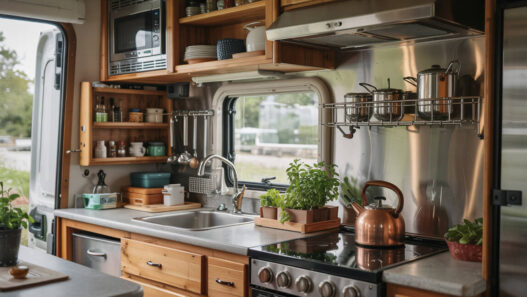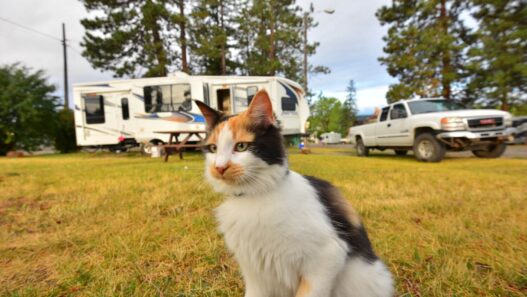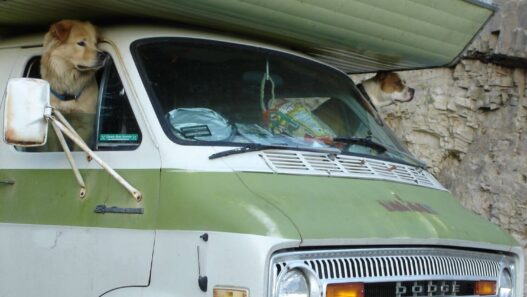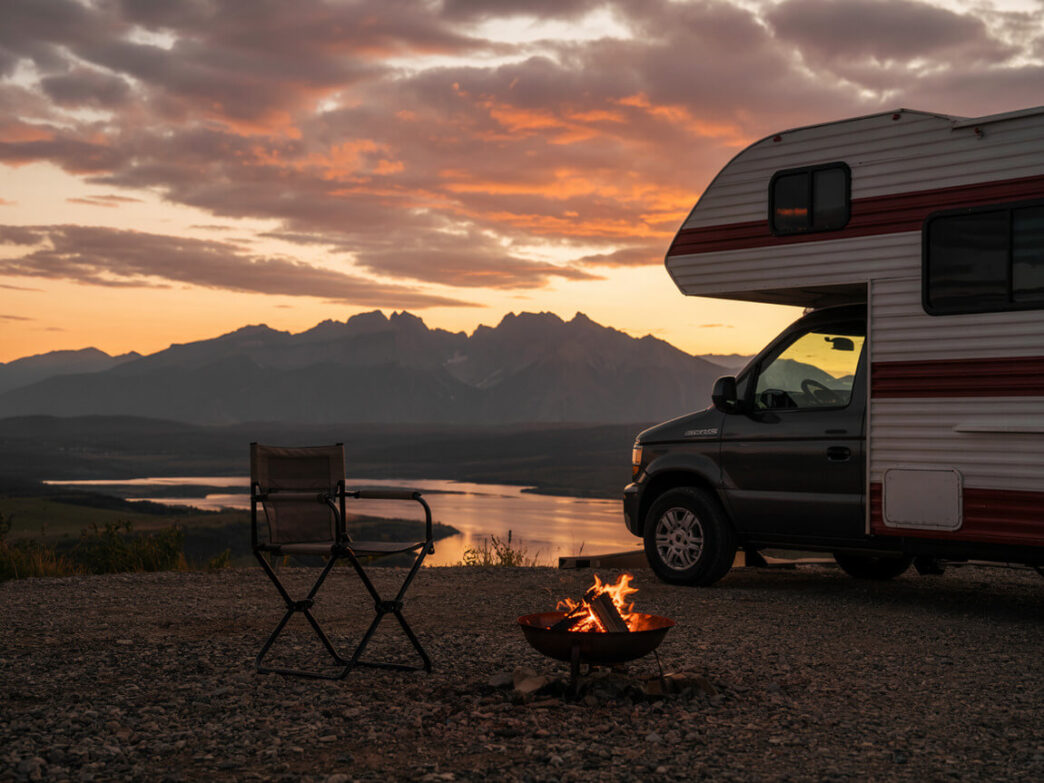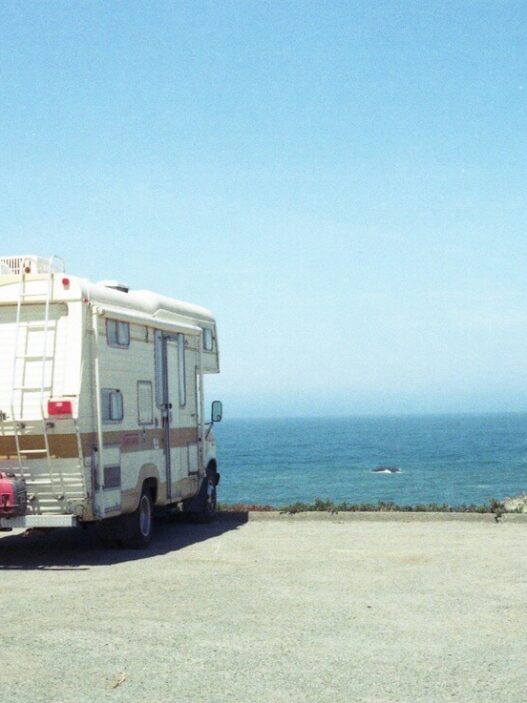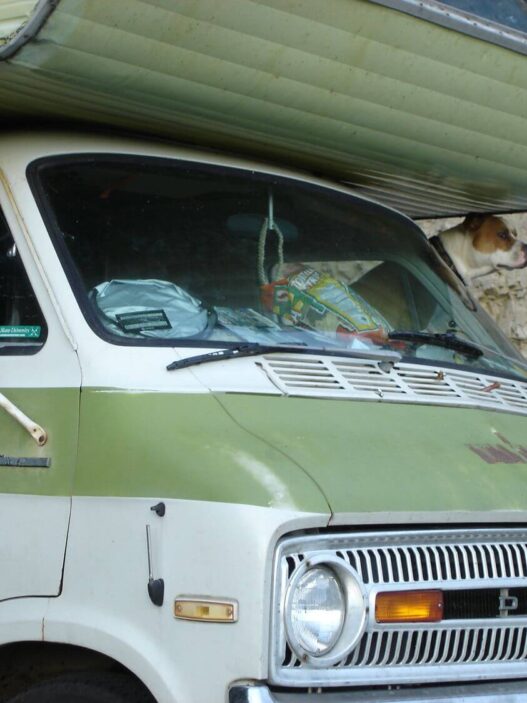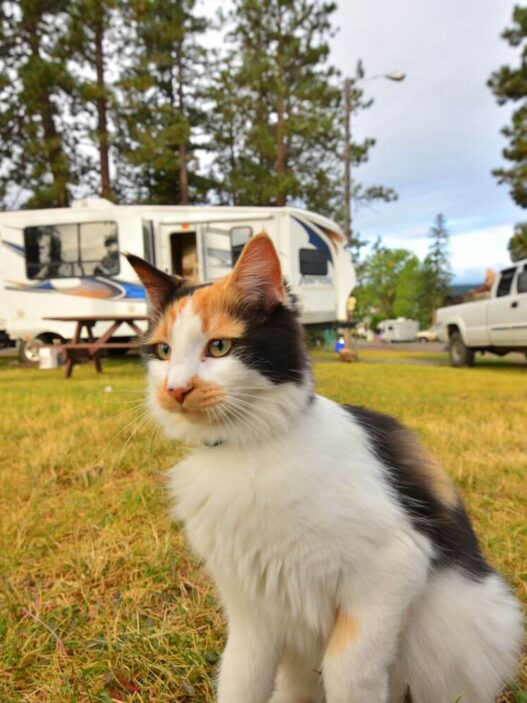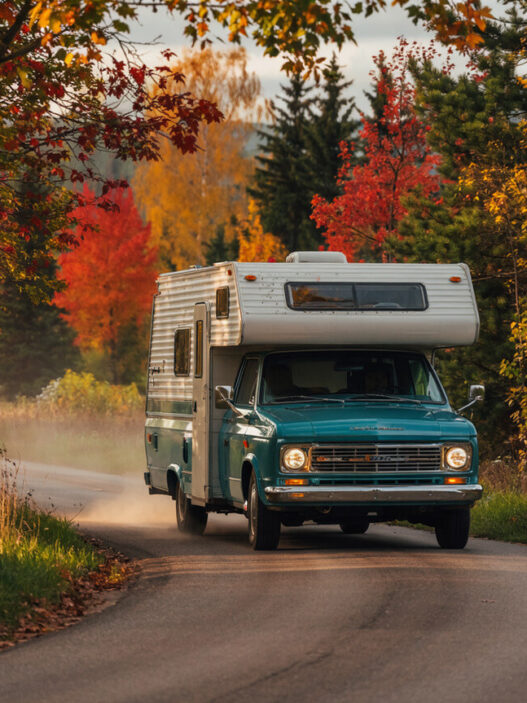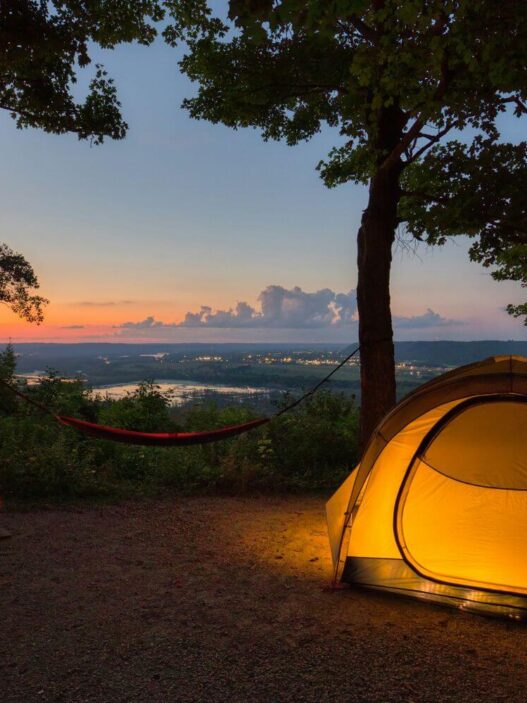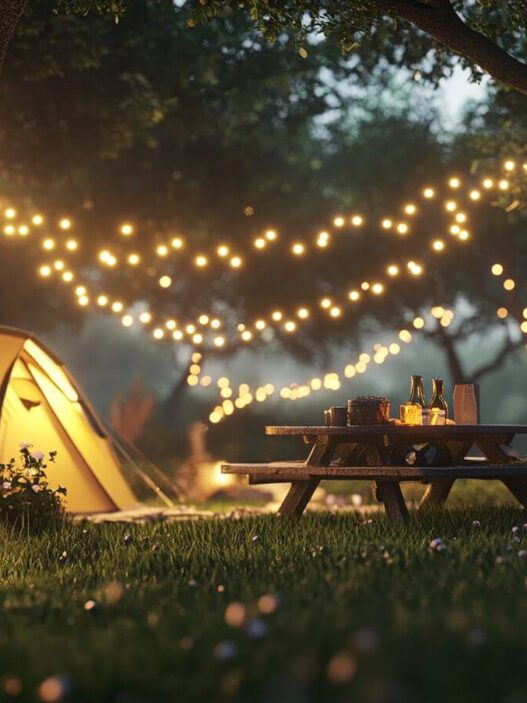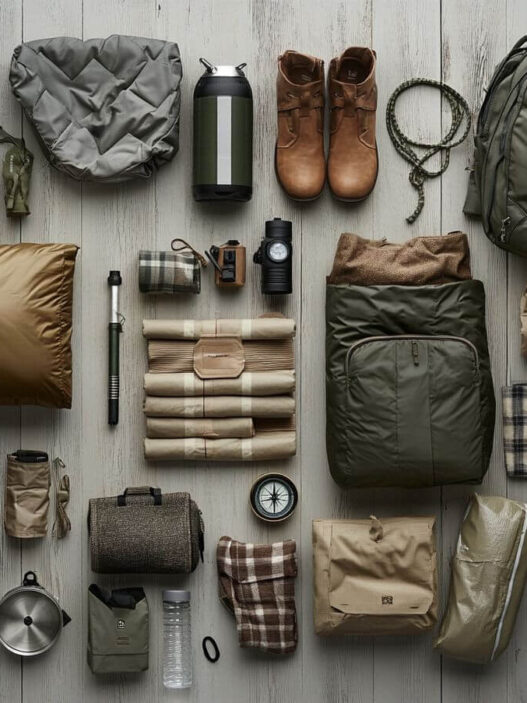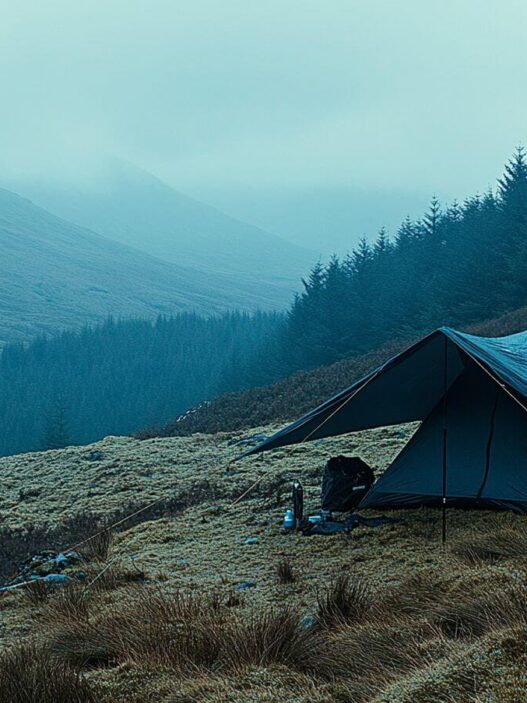If you’re new to RVing, learning from experienced campers can save you headaches and make your adventures much more fun. Instead of figuring everything out the hard way, we’ve gathered wisdom from seasoned RVers to help you avoid common mistakes and start enjoying your travels right away.
These beginner RV tips are exactly what you need to get started on the right foot!
1. Wait To Purchase Accessories
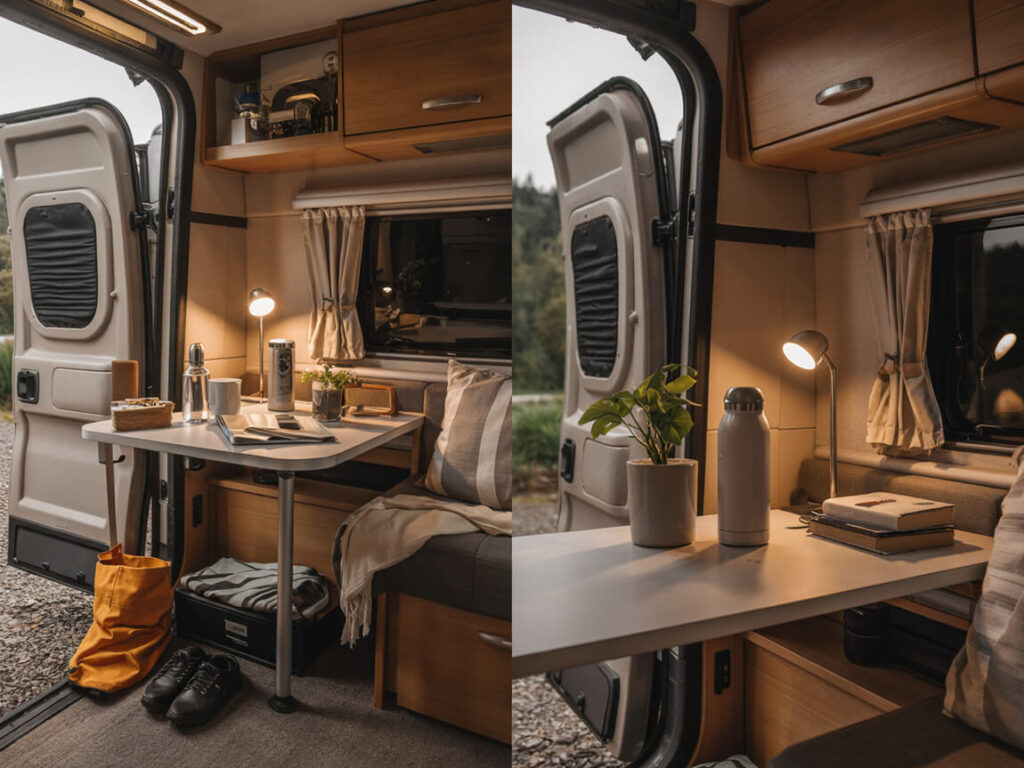
When you first get your RV, you’ll probably feel the urge to buy every cool gadget and accessory you see. Try to resist this temptation! It’s much better to take a few trips first and figure out what you actually need based on real experience.
This approach will save you money and prevent your RV from getting cluttered with stuff you never use. Many experienced RVers are surprised by how little they really need to enjoy camping. Just start with the absolute essentials:
- Wheel chocks
- Leveling blocks
- RV water hose
- RV sewer hose
- Appropriate surge protector (30 amp or 50 amp)
After a few trips, you’ll know exactly what would make your experience better, and you can shop with purpose rather than excitement.
2. Travel Slower
New RVers often try to pack way too many destinations into one trip. While it’s tempting to see as much as possible during your limited vacation time, rushing from place to place just leaves you exhausted.
When you hurry through your itinerary, everything becomes a blur. Your RV trip starts feeling more like checking boxes off a list than actually enjoying yourself. Instead, give yourself plenty of time to truly experience each location.
For example, if you’re visiting Yellowstone National Park, consider spending a full week there instead of just a couple days. You’ll have time to see the major attractions without rushing, discover hidden gems, and actually relax. Make sure to build some downtime into your schedule too. Nothing ruins a vacation faster than needing another vacation to recover from your vacation!
3. Secure Your Awning
Your RV awning creates wonderful extra living space, but it can cost a fortune to repair if damaged. Wind is the biggest enemy of awnings. An extended awning acts like a sail on the side of your RV, and one strong gust can bend the frame, break the arms, or even rip it completely off the mounting brackets.
This kind of damage often harms the fiberglass body of your RV too, leading to very expensive repairs. The simple solution? Always retract your awning when you’re not actively using it, and absolutely never leave it out when you leave your campsite.
Even if your RV has an automatic wind sensor that’s supposed to retract the awning in strong winds, don’t count on it. These sensors can fail when you need them most. This is definitely a case where prevention is much easier than repair!
4. Check For A Spare Tire
Many people assume their new travel trailer comes with a spare tire, but surprisingly, many don’t include one. The worst time to discover this is when you’re stranded on a remote road with a flat tire and no cell service.
Before your first trip, take a minute to look under your trailer or check storage compartments to verify whether you have a spare. If you don’t find one, buy an appropriate spare tire for your trailer right away. This small investment could save your entire vacation someday.
5. Shut Off Water When Away
It might seem like overkill, but turning off your water supply whenever you leave your campsite can prevent disasters. Plumbing connections and fixtures can fail without warning, and if you’re not around to catch a leak quickly, water can cause extensive damage.
If a pipe bursts or a connection fails while you’re away exploring for the day, you could return to find thousands of dollars of water damage to your cabinets, flooring, and belongings. The solution is simple: before leaving your campsite, especially for several hours, turn off the main water valve where water enters your RV. This takes just seconds and could save you from a camping trip turned nightmare.
6. Check Tire Pressure And Lug Torque
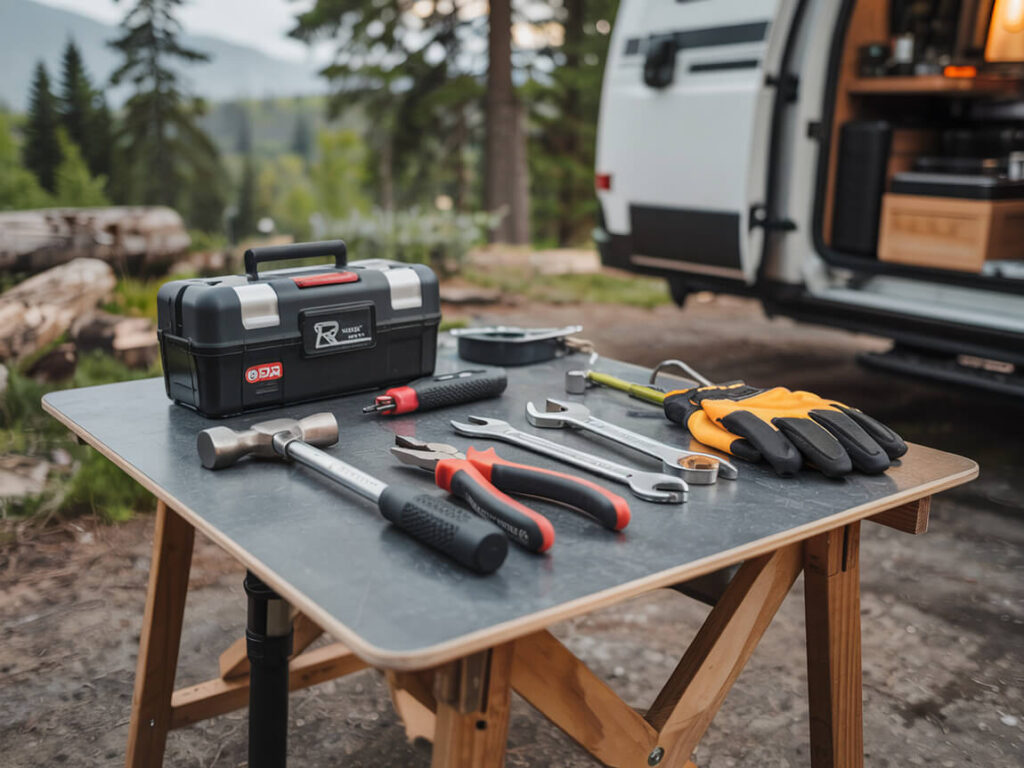
Before any significant trip in your RV, take time to check both your tire pressure and the tightness of your wheel lugs. This is especially important if your vehicle has been sitting in storage for a while.
Proper tire pressure according to manufacturer recommendations improves fuel economy and dramatically reduces your chances of experiencing a dangerous blowout on the highway. Equally important is verifying that your lug nuts are properly tightened to the correct torque specification.
Using a torque wrench ensures the lugs are exactly as tight as the manufacturer recommends (you can find this information in your owner’s manual or by asking your dealer). These simple checks take just minutes but can prevent dangerous situations and extend the life of your tires and wheels.
7. Look Up When Backing In
Here’s a beginner RV tip that can save your roof: When backing your RV into a campsite, most drivers carefully watch for obstacles on the ground or at eye level, but many forget to check for hazards overhead. Since most RVs stand at least 10 feet tall, you need to be particularly careful about overhanging tree limbs or branches.
Forgetting to look up is one of the most common ways RV rubber roofs get damaged. Even a relatively small branch can puncture or tear an RV roof, leading to leaks and expensive repairs. Always scan the entire area before and during your backing maneuvers, including that critical space above your RV.
8. Change Smoke/CO Detector Batteries
Most of us rely on the annoying beep to remind us when detector batteries need changing. However, this system breaks down with RVs that sit in storage for months at a time.
While in storage, smoke and carbon monoxide detectors might beep for weeks or months until their batteries completely die. When you take your RV out for the season, you’ll have no way of knowing the detectors aren’t working unless you check.
Make it a habit to replace the batteries in both smoke and carbon monoxide detectors whenever you bring your RV out of storage. At minimum, press the test button to confirm they’re operational. This small task could literally save your life during your travels.
9. Replace CO Detectors After 5 Years
Many RV owners don’t realize that carbon monoxide detectors have a limited useful life. Even if they seem to be working properly, the sensors that detect this deadly gas become less sensitive over time.
Most carbon monoxide detectors remain effective for 5 to 10 years. If your RV is more than five years old, it’s wise to replace the CO detector regardless of whether it still appears functional. Carbon monoxide is colorless, odorless, and can be lethal before you even realize it’s present. This is absolutely not a place to cut corners or delay maintenance.
10. Dump Black Tank First, Then Gray
For new RVers, the whole process of emptying waste tanks can seem intimidating. Here’s a beginner RV tip that makes everything cleaner and easier: always empty your black tank (toilet waste) first, followed by your gray tank (sink and shower water).
This sequence works because the soapy water from your gray tank helps clean out your sewer hose after the black tank contents have passed through. It essentially gives your sewer hose a mini rinse cycle, removing residue and reducing unpleasant odors.
This simple practice makes the whole dumping process more sanitary and helps maintain cleaner equipment over time.
11. Check Battery Fluid Levels
If your RV has traditional wet cell (lead acid) batteries, which remain the most common type due to their reliability and affordability compared to lithium options, regular maintenance is essential.
You need to periodically check the water level in these batteries to ensure optimal performance. If levels are low, refill using only distilled water, never tap water. The minerals in regular water can damage battery cells and reduce battery life.
Taking a few minutes to inspect and maintain your batteries can prevent unexpected power failures during your trips and significantly extend battery lifespan, saving you money in the long run.
12. Make A Plan And Stick To It
While everyone enjoys some spontaneity, RV trips generally go more smoothly with good planning. A thoughtful itinerary helps you avoid unwanted surprises and ensures everyone has a great time.
Before hitting the road, research your route, campgrounds, and attractions. Make reservations when possible, especially during busy seasons when campgrounds fill quickly. Consider practical factors like driving distances, terrain, fuel stops, and rest areas.
Once you’ve created your trip plan, try to follow it closely. Minor adjustments are fine, but keeping to your overall framework reduces stress and lets you focus on enjoying the journey rather than solving unexpected problems.
13. Use The 3:30 Rule
One of the most valuable beginner RV tips you’ll ever get is the “3:30 Rule” for travel planning: either drive no more than 330 miles in a day or plan to arrive at your destination by 3:30 PM. This guideline acknowledges that driving an RV or towing a trailer requires much more concentration than driving a car.
When you’re constantly watching mirrors, monitoring traffic, looking for exits, and carefully changing lanes, mental fatigue sets in much faster. Plus, you definitely don’t want to be backing into a site, leveling your RV, and hooking up utilities in the dark.
Arriving by mid afternoon gives you plenty of time to set up camp, relax a bit, and enjoy your evening. It feels much better to calmly establish your site, have a light meal, and start a campfire while it’s still daylight than to fumble with connections using flashlights.
14. Have Duplicate Essentials
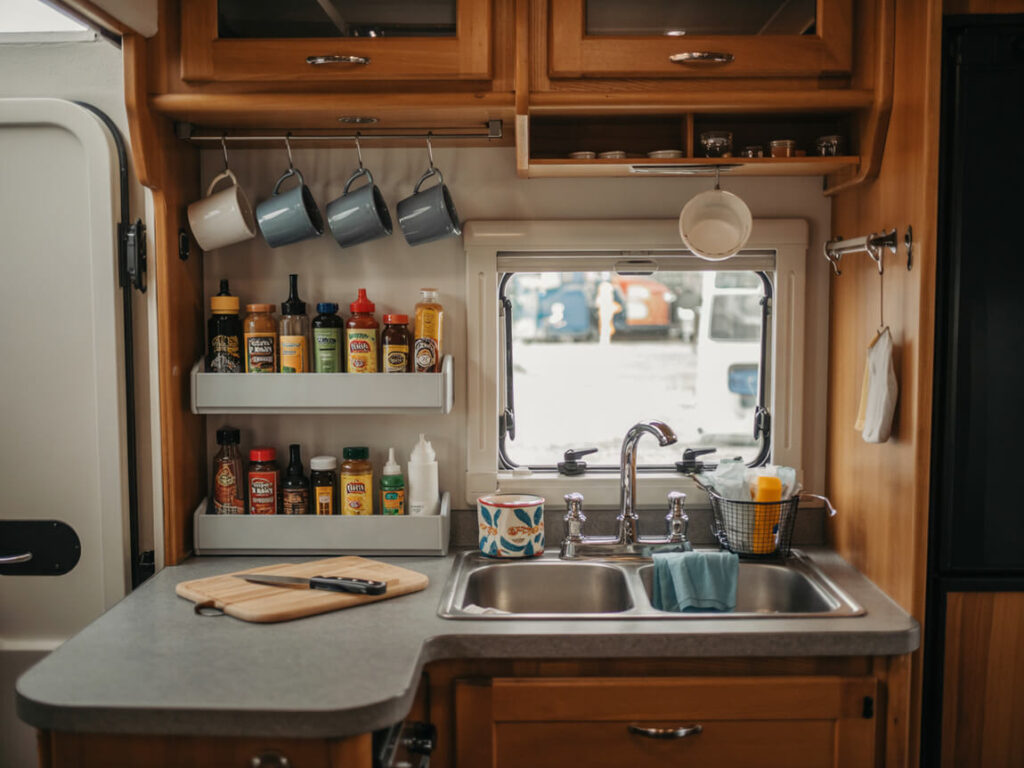
Save yourself endless hassle by keeping duplicate items in your RV rather than constantly moving things between your home and vehicle before a trip. Consider having separate sets of:
- Coffee pot
- Pots and pans
- Kitchen utensils
- Silverware
- Can opener and corkscrew
- Towels
- Bedding (sheets and blankets)
While this approach requires some initial investment, the convenience is absolutely worth it. Without duplicates, you’ll constantly run back and forth between house and RV retrieving items, and inevitably discover you’re missing something crucial when you’re already at your campsite far from home.
15. Check Hookup Distances Before Unhooking
Before disconnecting your RV from your tow vehicle and leveling it, always verify that your water hose, electrical cord, and sewer hose will reach the campsite’s utility connections. This quick check can save you from the frustration of having to reconnect and reposition everything.
Many campers have unhitched their RV only to discover they need multiple water hoses to reach their site, or that their sewer hose barely stretches to the connection. Some have even found that their slide out would hit a utility pole or tree after setup.
Take a moment to walk around your site and confirm all connections will reach comfortably before unhitching. This small step prevents major headaches later.
16. Use Dryer Sheets To Deter Mice
Mice and other small rodents can cause surprising damage to an RV, especially during storage periods. A simple and effective deterrent is placing dryer sheets in drawers, cabinets, under furniture, and anywhere else mice might enter or nest.
The strong scent of dryer sheets repels mice and can help keep them from making your RV their home. This inexpensive solution is much easier than dealing with the aftermath of a rodent infestation.
Remember to replace the sheets periodically as their scent fades over time. This is particularly important when preparing your RV for long term storage.
17. Secure All Cabinets And The Shower Door
Before hitting the road, double check that all cabinet doors and drawers are securely latched, and don’t forget about the shower door. The movement and vibration during travel can cause unsecured items to swing open, potentially causing damage or injury.
A shower door that comes unlatched during transit can shatter, creating a dangerous mess and requiring an expensive replacement that might not be easy to find for your specific RV model. Similarly, cabinet contents can become projectiles if doors fly open while driving.
Take an extra minute before departure to verify everything is secure. Many experienced RVers develop a pre departure checklist to ensure nothing gets overlooked.
18. Wipe Dishes Before Washing
Here’s a great tip for conserving your gray water tank capacity: wipe your dishes clean with paper towels before washing them in the sink. Running water continuously while doing dishes can quickly fill your gray water tank, especially at campsites without full hookups.
Before washing, use paper towels to remove as much food residue as possible and throw it in your trash. This approach serves two purposes: it keeps food particles from going down your drain (preventing potential clogs) and significantly reduces the amount of water needed for cleaning.
With dishes nearly clean before washing, you’ll need much less water for soap and rinsing, extending the time between gray tank dumps.
19. Learn About “Off Tracking” And “Tail Swing”
Understanding how your RV moves during turns is crucial for safe driving, especially if you’re used to smaller vehicles. Two important concepts to master are “off tracking” and “tail swing.”
Off tracking happens because your RV’s front wheels follow a different path than the rear wheels during turns. The longer your RV’s wheelbase, the more pronounced this effect becomes. New RV drivers often turn too early, not allowing enough clearance for the rear wheels to safely complete the turn.
Tail swing refers to how the rear portion of your RV swings outward in the opposite direction of your turn. Most RVs have significant overhang behind the rear axle, which can hit objects if you’re not careful during tight turns.
Practice in empty parking lots to get a feel for how your specific RV handles before taking it on busy roads.
20. Keep An RV Toolkit Handy
The open road is unpredictable, and having a well equipped basic tool kit can be the difference between a quick fix and a ruined trip. Your RV toolkit should include:
- Screwdriver set (both flathead and Phillips)
- Pliers (regular and needle nose)
- Adjustable wrench set
- Duct tape
- Wire cutters
- Electrical tape
- Basic electrical supplies
These tools help you handle common issues that arise during RV travel, from tightening loose screws that have vibrated loose to making temporary repairs until you can reach professional help.
Remember that RVs constantly move and shake while traveling, which means things work loose or need adjustment more frequently than in a stationary home.
21. Know Your RV’s Height And Width
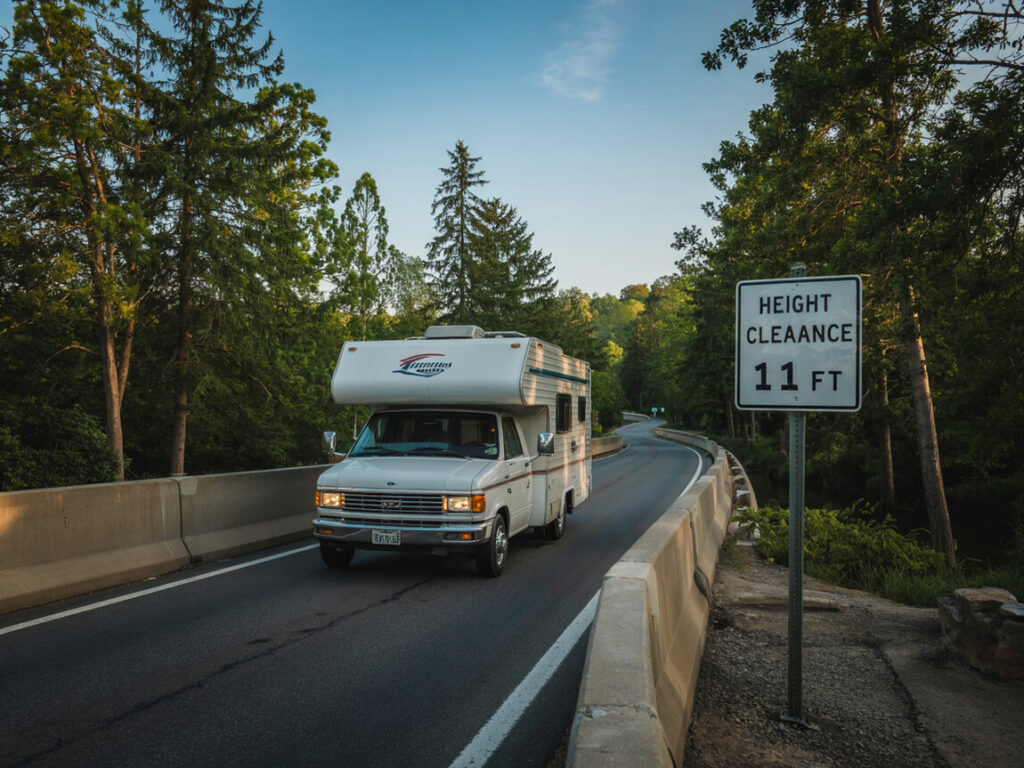
This beginner RV tip could save you thousands in repair costs: Always know your RV’s exact dimensions, particularly height and width. Write these measurements down and keep them visible in the driver’s area for quick reference.
Height awareness is especially critical when navigating under bridges, overpasses, drive throughs, or gas station canopies. There’s nothing more stressful than approaching an overpass and feeling uncertain whether your RV will clear it. Low clearance structures can cause catastrophic damage if misjudged.
Width awareness matters when navigating narrow roads, campsite entrances, or toll booths. Knowing exactly how much space you need helps prevent scrapes and collisions.
Many experienced RVers add a small note or sticker with their RV’s dimensions on the dashboard as a constant reminder.



